As companies worldwide embrace rapid digital transformation, many Japanese offices remain attached to traditional practices like paper documents, physical stamps (hanko), and manual workflows. This reliance results in inefficiencies and frustration among workers.
Our surveys of 1,000 office employees highlight a stifled innovation environment. Although employees recognize the benefits of digital solutions — such as cloud storage and e-signatures — many companies still favor outdated systems. This hinders technological effectiveness and puts Japan's competitive edge at risk.
While workers acknowledge the importance of technology in task management, the slow adoption of new tools reveals a pressing need for modern solutions. Balancing cultural practices with streamlined workflows is essential for creating agile and efficient workplaces.
Survey overview
The first survey was conducted among 1,000 Japanese office workers across Japan, with a roughly 80% male to 20% female ratio. For the second survey, a subset of 100 office workers was selected.
Survey 1: Answers
Question 1. How do you usually store internal company documents?
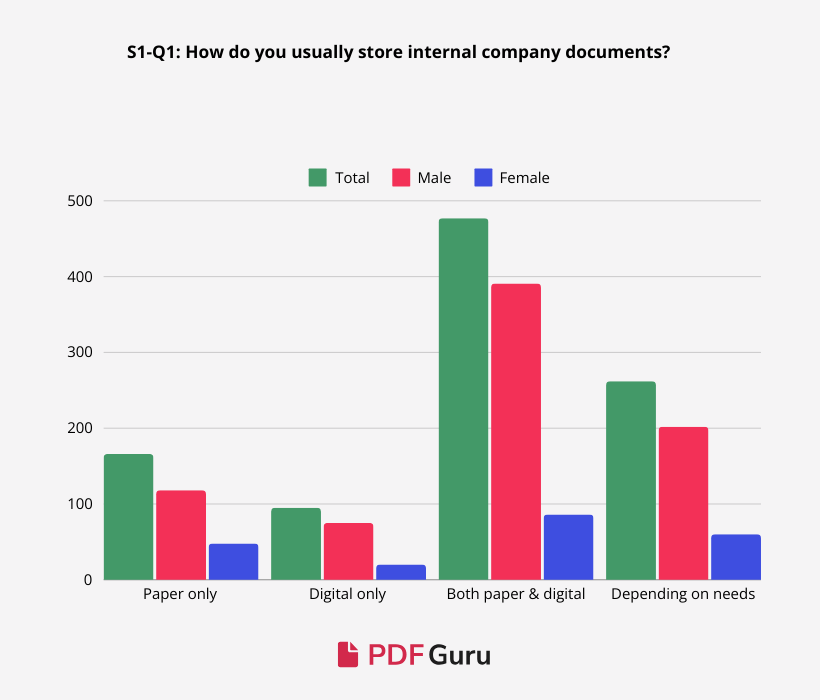
The graph clearly shows that less than 10% of respondents rely exclusively on digital formats for storing internal documents. Meanwhile, nearly 17% still use only paper, which is surprisingly high for 2024.
Overall, the data indicates that over 90% of respondents continue to use paper in some capacity, highlighting a persistent reliance on traditional formats.
Question 2. In what situations do you use paper documents?
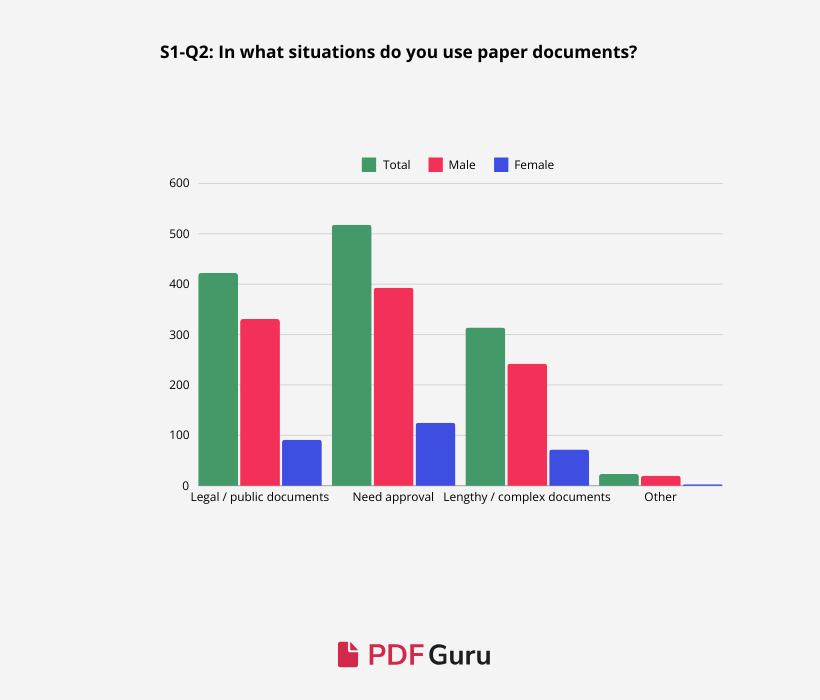
The results clearly show that important documents are still predominantly handled in paper form. Notably, in the 'Need Approval' category, over 50% of respondents indicated that a physical hanko stamp from a manager is required.
The continued reliance on paper for legal, public, and lengthy or complex documents in 2024 likely stems from legacy practices rather than practical necessity.
Question 3. How important is technology in managing work tasks?
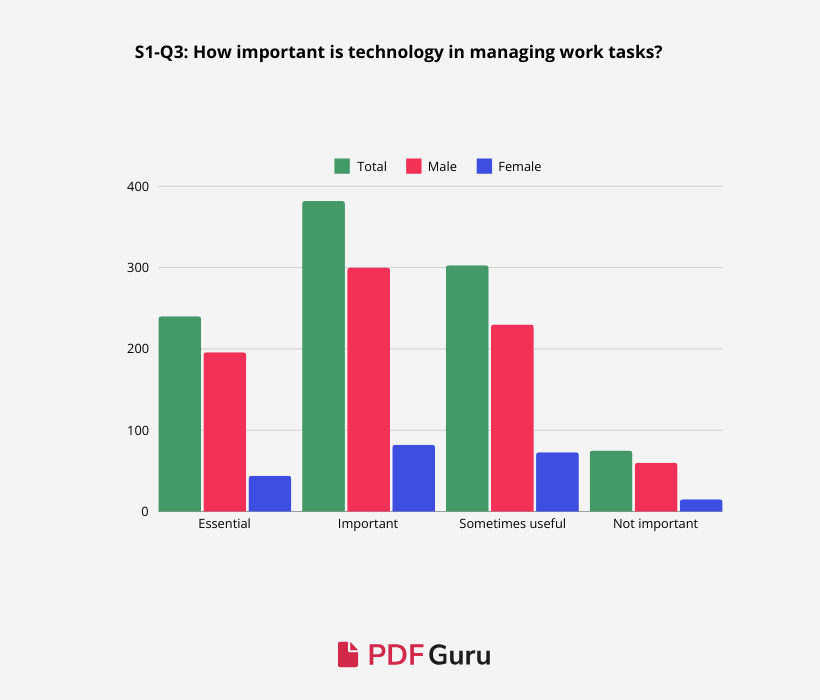
Over 50% of respondents consider technology important or even essential for managing work tasks. However, nearly 40% feel that technology is not particularly useful or necessary. This suggests that a significant portion of these respondents likely rely heavily on paper-based processes, pointing to inefficiencies in their organization's workflow.
Question 4. What tool do you most often use when creating internal company documents?

Over 60% of respondents use Microsoft Word — a trend that is expected — while nearly 18% still rely on pen and paper. This finding reinforces earlier data, underscoring the continued use of paper-based processes in daily work.
Question 5. How do you store and share documents?
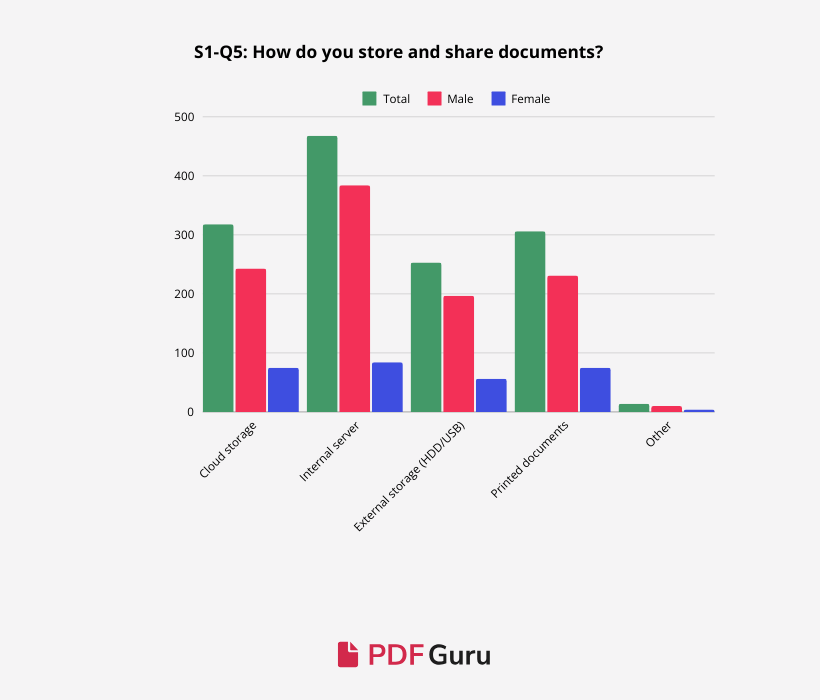
These findings are particularly notable. Although nearly 79% of respondents store and share documents digitally, most either do not use cloud storage or are not permitted to do so, reflecting a strong preference for internal storage solutions. This is further evidenced by the fact that over 50% of respondents rely on external hard drives, USB devices, or printed copies—all of which inherently involve local, internal storage.
Question 6. Please tell us about the use of physical or electronic stamps in your company.
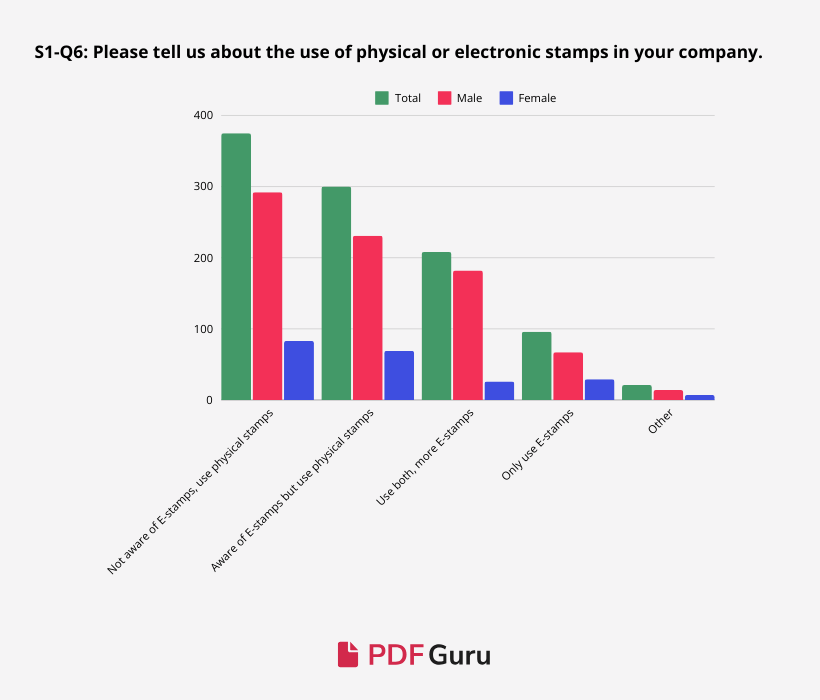
This data reinforces earlier findings about the reliance on paper in work processes. Nearly 38% of respondents are unaware of e-stamps, indicating their reliance on printed documents with physical stamps. Additionally, 30% are aware of e-stamps but still use physical stamps in practice. Another 21% use both types, though they show a preference for e-stamps. Fewer than 10% rely exclusively on e-stamps, suggesting that around 68% of respondents still require physical stamps for approvals, further highlighting the continued dependence on printed documents.
Question 7. What is the most commonly used method for electronic signatures in your office?
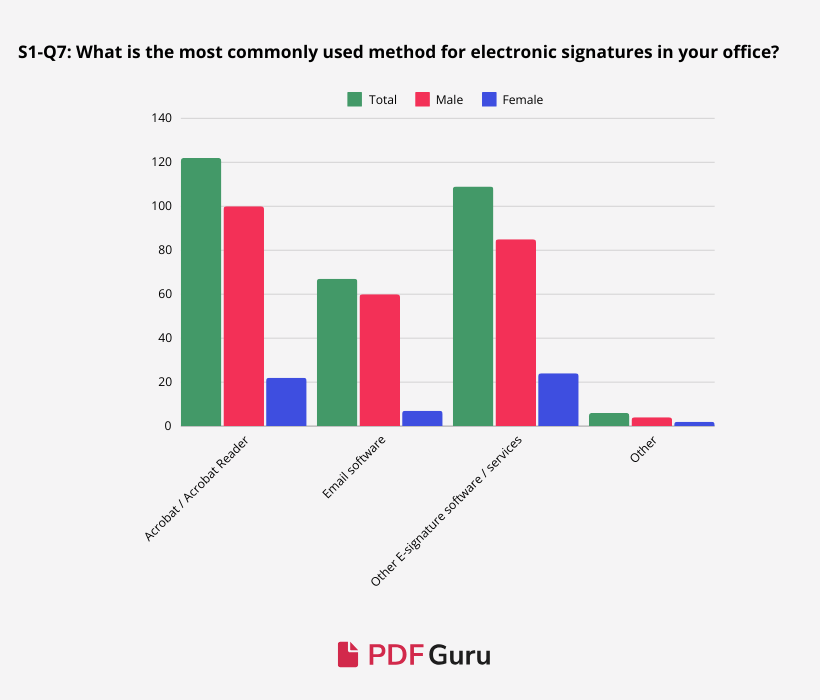
Adobe Acrobat is the most commonly used tool for electronic signatures, holding a slight edge over other options. A follow-up study could provide deeper insights into the specific software packages used and their adoption patterns.
Question 8. How satisfied are you with your company’s overall digitalization (e.g., transition from paper to electronic documents)?

While just over 10% of respondents report being very satisfied with their company’s digitization efforts, more than 50% express dissatisfaction or are only partially satisfied, highlighting significant room for improvement.
Question 9. What percentage of your work do you perform using a computer?
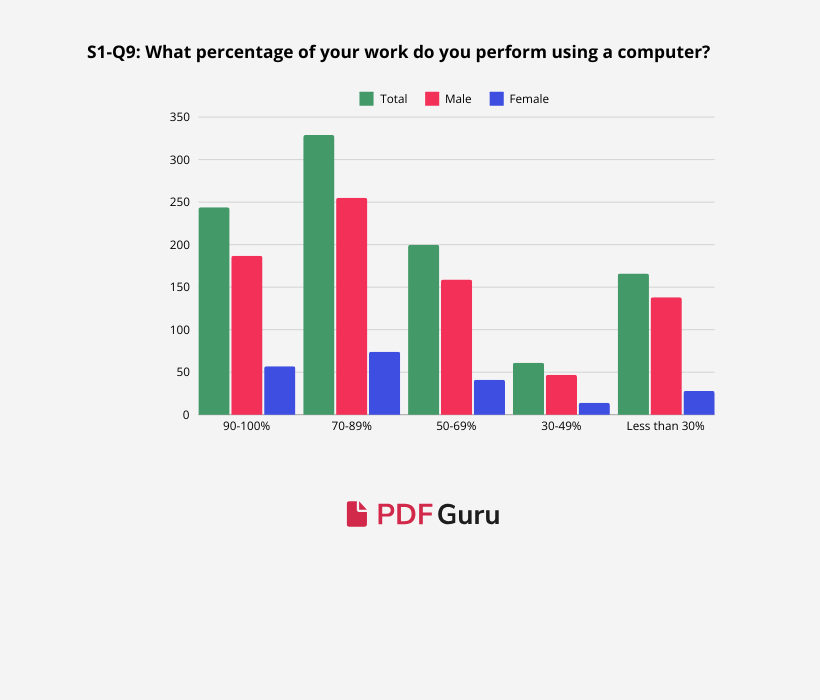
The results reveal that only around 24% of respondents primarily rely on computers for their tasks. In contrast, the majority use computers less frequently, underscoring the ongoing dependence on paper-based processes in the workplace.
Question 10. How quickly does your company adopt new technology?
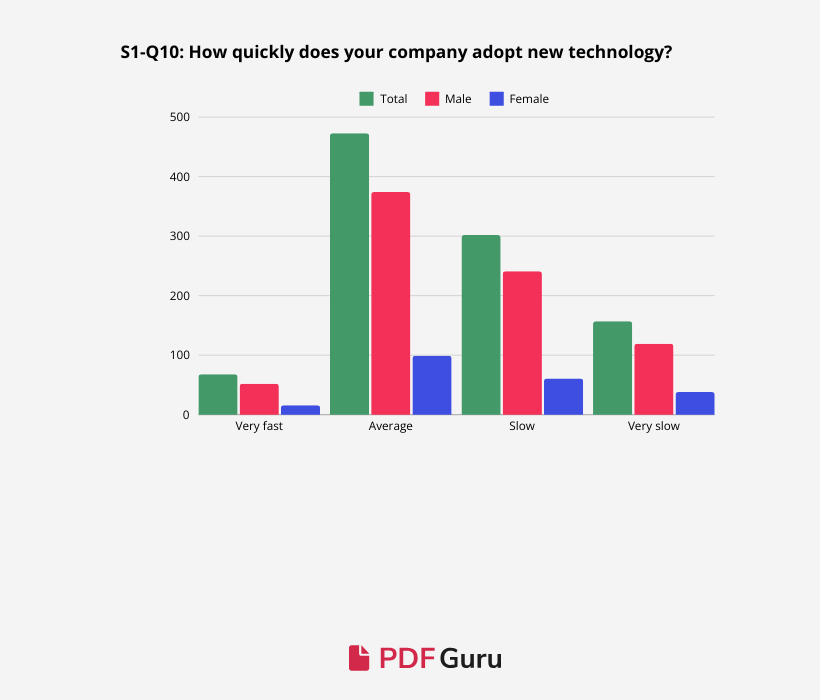
Only around 7% of respondents report that their companies adopt new technology quickly. The majority describe the adoption rate as average, while nearly 46% say it is slow to very slow, indicating substantial room for improvement.
Survey 1. Summary of Key Findings
Document Storage Practices: Less than 10% of respondents fully use digital formats for storing internal documents. Around 17% rely solely on paper, while more than 90% still use paper formats to some degree.
Use of Paper Documents: Important documents still require paper, especially for approvals where a physical hanko stamp is necessary. More than 50% of respondents require physical stamps, indicating a reliance on paper due to legacy practices.
Importance of Technology in Task Management: Over 50% believe technology is essential for managing work tasks, but nearly 40% do not find it particularly useful or necessary, indicating an ongoing reliance on paper formats and suboptimal workflows.
Tools for Document Creation: Microsoft Word is the most used tool (60%), but around 18% still use pen and paper for creating documents, further supporting the ongoing reliance on paper in daily tasks.
Document Storage and Sharing: While nearly 79% store and share documents digitally, many do not use cloud storage, preferring internal methods like USBs, external hard drives, or printed copies.
Use of Physical and Electronic Stamps: Around 68% of respondents still require physical stamps for document approvals. Only 10% rely exclusively on electronic stamps (E-stamps).
Electronic Signatures: Adobe Acrobat is the most commonly used tool for electronic signatures, holding a slight edge over other options. However, further study could reveal more details about software preferences.
Satisfaction with Company Digitalization: Over 50% of respondents are dissatisfied or only partially satisfied with their company’s digitalization efforts, while only about 10% are very satisfied.
Computer Usage in Work: Only 24% of respondents primarily rely on computers for their tasks, reinforcing the observation of continued paper use.
Adoption of New Technology: Only about 7% report fast adoption of new technology, while nearly 46% state their company is slow in implementing new tech.
Survey 2: Answers
Question 1. What is the biggest challenge regarding internal documents?
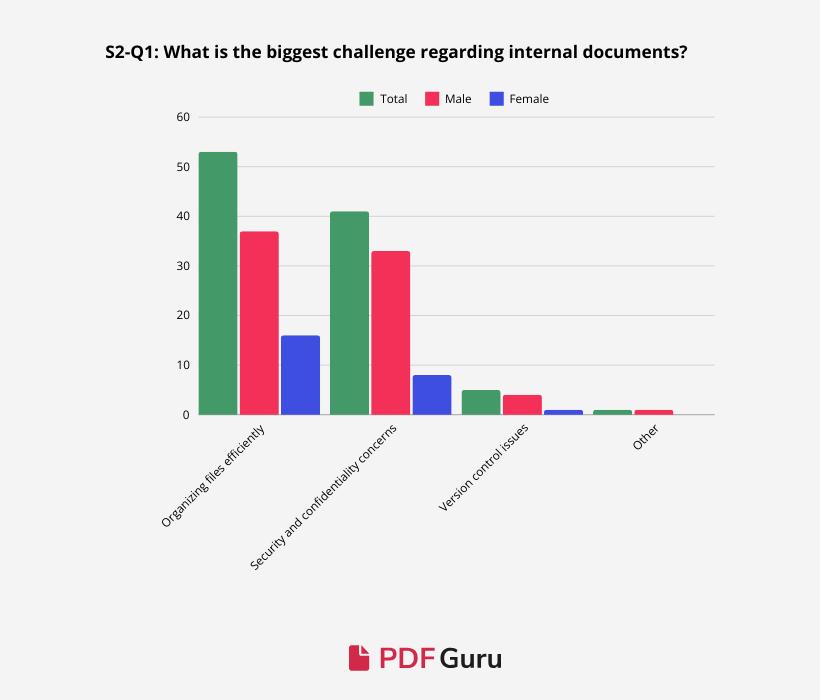
Efficiently organizing internal documents is a major challenge for over 50% of respondents. While digital storage could streamline this process, the data suggest that many still rely on printed documents, which need to be filed alongside existing paper records. Security and confidentiality concerns also persist across both digital and physical formats. Interestingly, fewer than 10% of respondents report issues with version control — a challenge typically associated with digital documents — which further emphasizes that a significant portion of office work remains dependent on printed materials.
Question 2. How often do you edit existing files?
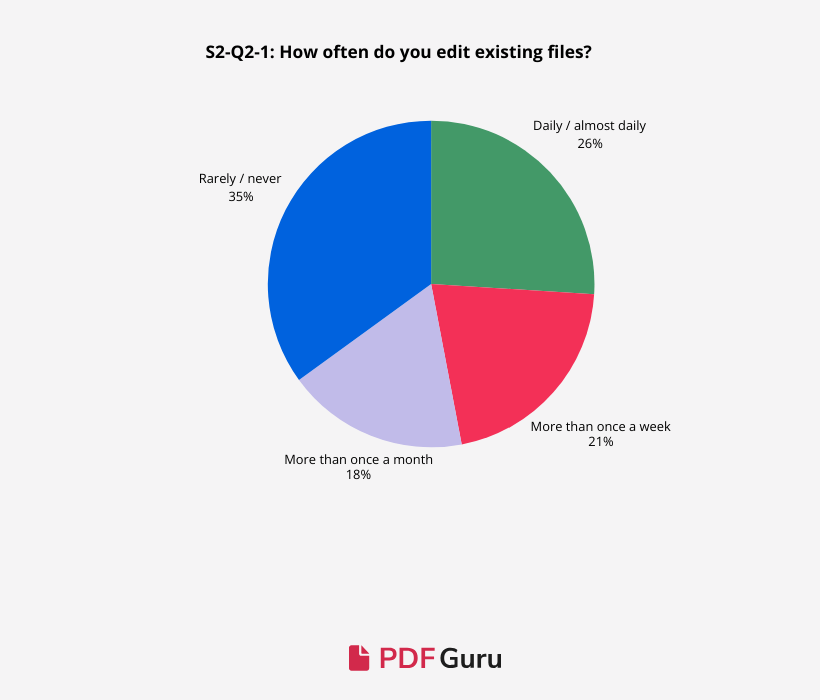
Most respondents indicate that they rarely or never edit existing files, suggesting a reliance on printed documents, which are difficult to modify without reprinting. In contrast, just over 25% report editing documents almost daily, aligning more closely with digital workflows.
Question 3. How often do you convert documents to PDF format?
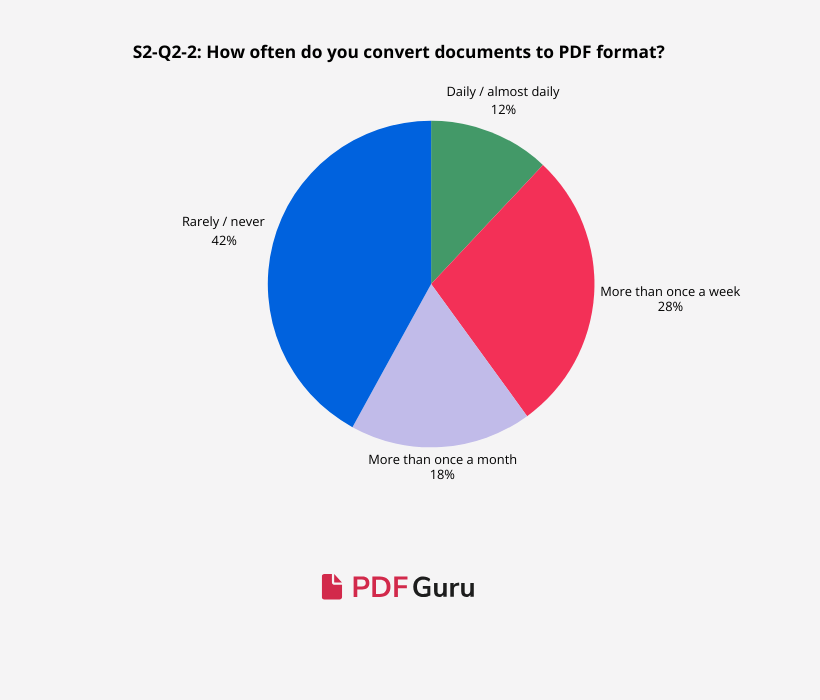
This data supports earlier findings, revealing that the majority of respondents rarely or never convert documents to PDF. While this may suggest that PDF conversion isn’t a critical part of their tasks, it likely reflects a continued reliance on printed documents. Furthermore, just over 10% of respondents convert documents to PDF almost daily, further highlighting the ongoing use of paper-based workflows.
Question 4. How often do you use English-language software or tools?
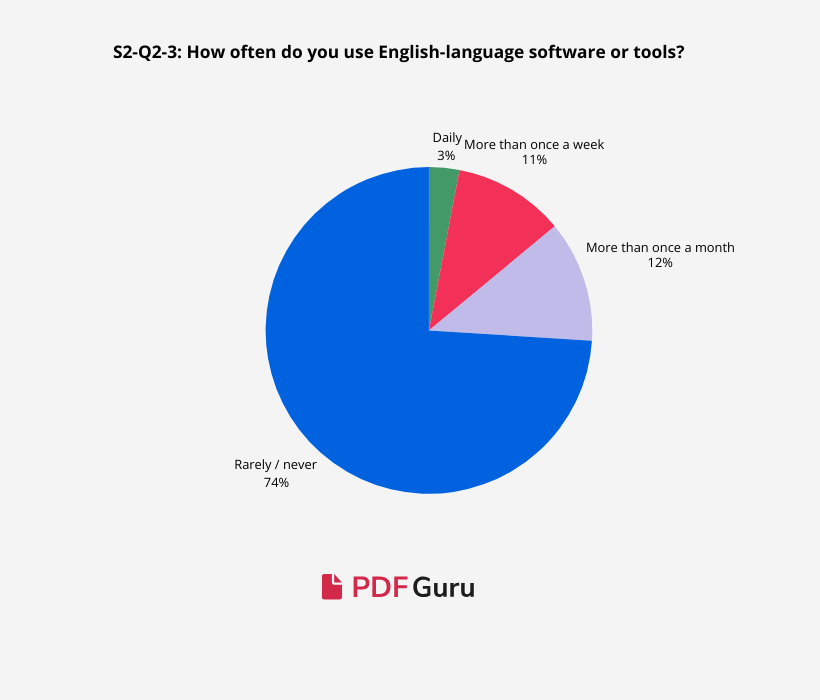
The vast majority of respondents report that they rarely or never use English-language software or tools. Notably, over 60% of respondents reported using Microsoft Word in a previous question, indicating that the software is typically configured with Japanese language settings.
Question 5. How often do you use AI within your company?

The vast majority of respondents report that they rarely or never use AI tools in their work, sharply contrasting with the widespread adoption of tools like ChatGPT in Western countries. A follow-up study could explore whether this is due to company policies, lack of familiarity, fear of the unknown, or a combination of these factors. These findings align with previous survey results that show only 10% of respondents expressed satisfaction with their company’s digitization efforts. To fully leverage AI tools, document digitization is essential — highlighting a key barrier to AI adoption in these workplaces.
Question 6. How much pressure do you feel to speed up your work due to the introduction of new digital tools or software updates?
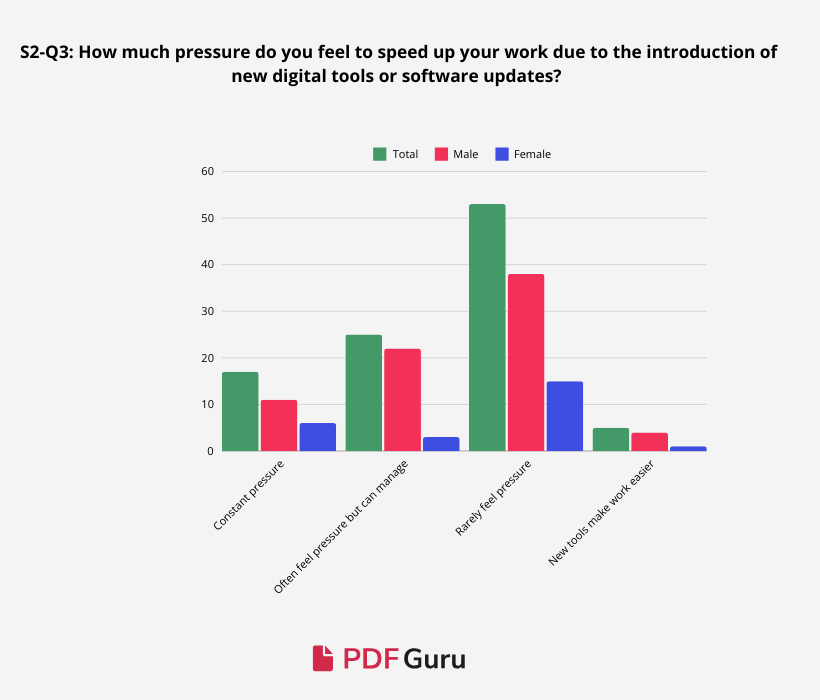
The survey data reveals that over 50% of respondents rarely feel pressured to accelerate their work due to the introduction of new digital tools. While this might suggest a level of comfort with these tools, a more likely interpretation—considering the broader survey results—is that many respondents still rely heavily on printed documents, making digital tools less relevant to their workflow. This is further supported by the fact that only a small percentage of respondents feel these tools have meaningfully improved their work. The limited impact of digital tools could be attributed to slow adoption rates within companies or insufficient training, which prevents employees from fully utilizing their potential. Additionally, the ongoing reliance on paper-based processes suggests that digital tools are often viewed as supplementary rather than essential in daily operations.
Question 7. How comfortable are you using Japanese-made software or tools compared to international alternatives (e.g., Microsoft, Google)?
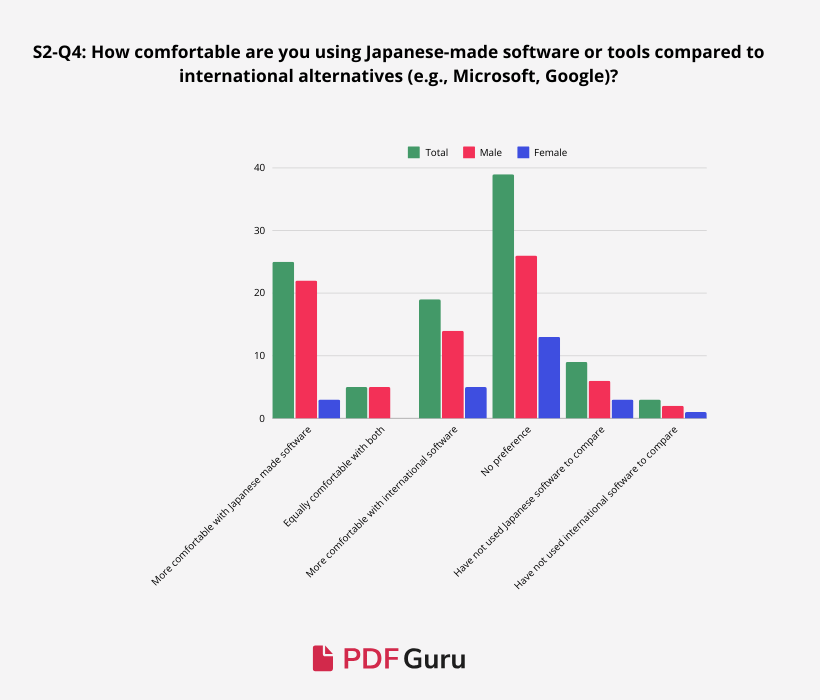
Opinions are divided regarding respondents' preferences for Japanese-made software versus international alternatives. However, data from another survey question suggest that most respondents feel more comfortable using software configured with Japanese language settings.
Question 8. Do you feel that your management is actively adopting new solutions, or are they reliant on traditional methods?
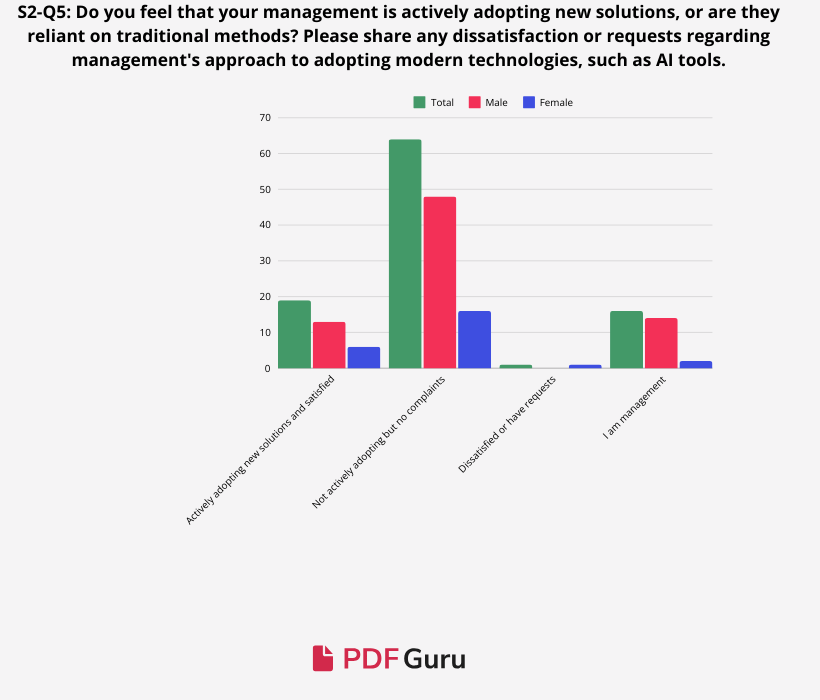
Most respondents indicate that new solutions are not actively adopted, and they are satisfied with this status quo. However, this does not necessarily imply that their work processes are efficient. It is more likely that they are comfortable with familiar methods. As long as these practices remain the industry norm, there is little pressure from management to adopt modern technologies. This points to a preference for maintaining the status quo over pursuing innovation, likely driven by comfort with established routines and a lack of external motivation to change.
Question 9. How do you feel about the reliance on traditional methods (e.g., fax, paper documents) versus digital solutions in your office?
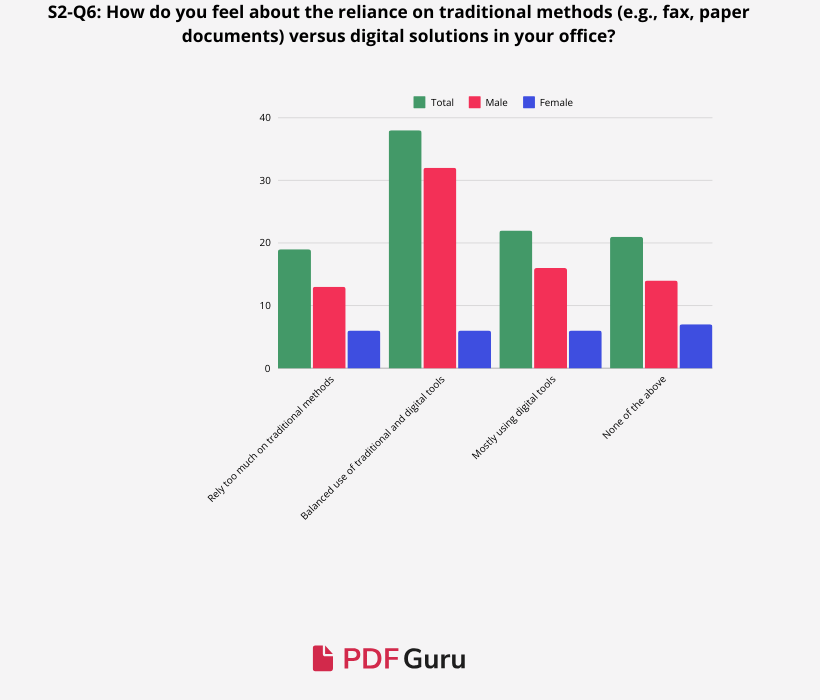
Slightly less than 20% of respondents feel there is excessive reliance on traditional methods, suggesting that the majority are either satisfied with the current balance between traditional practices and digital tools or comfortable maintaining the status quo. This reflects a broad acceptance of existing workflows, whether they rely primarily on traditional methods or a mix of both.
Question 10. How do you feel about the balance between traditional working methods and modern innovations, such as AI tools, in your workplace?
We received some mixed responses to this open question.
Here are some examples of positive comments:
For quick searches, letting AI handle it is easier, so once people find it convenient, everyone uses it without resistance.
I think it's appropriately managed and well-balanced.
It's a perfect balance.
We've caught up considerably in digital areas, but I think there's still a long way to go.
Examples of negative responses:
Can't keep up with AI.
It takes time because few people can handle it.
Since it's a company with an older demographic, we want to advance more but it's not progressing easily.
There are still many seals (stamps).
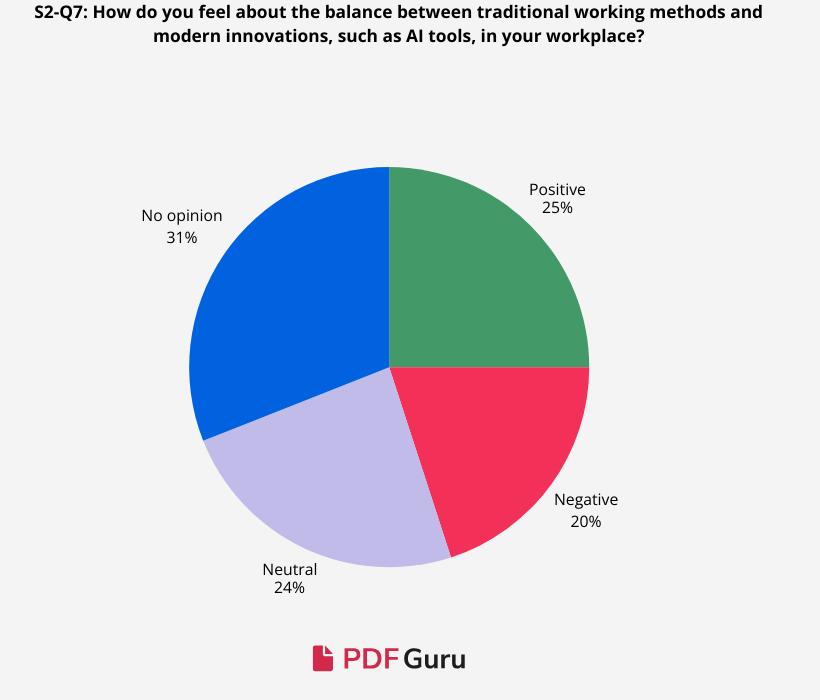
The fact that most respondents remained neutral or indifferent suggests a broad acceptance of the status quo. This points to a lack of significant innovation in many workplaces, as employees seem neither challenged nor particularly engaged with new technologies. It indicates that traditional methods remain deeply ingrained, with little pressure to adopt modern solutions.
Survey 2: Summary of Key Findings
Challenges with Internal Documents: Over 50% of respondents cite efficiently organizing internal documents as their biggest challenge. The coexistence of digital and paper documents complicates this process. Fewer than 10% report issues with version control, suggesting many still work with printed documents.
Frequency of File Editing: Most respondents rarely or never edit existing files, suggesting a reliance on printed documents, which are less flexible for modifications.
Converting Documents to PDF: The majority of respondents rarely convert documents to PDF, reinforcing the notion that they still rely heavily on paper formats. Only about 10% of respondents convert documents to PDF almost daily.
Use of English Software or Tools: The vast majority rarely or never use English software or tools. While over 60% use Microsoft Word, it’s likely they use the software in Japanese.
Use of AI in the Workplace: Most respondents rarely or never use AI in their work, contrasting with more widespread AI use in other regions. This could be due to company policies or a lack of familiarity with AI tools.
Pressure from Digital Tools: Over 50% of respondents feel little to no pressure to speed up their work due to new digital tools, likely because they rely on printed documents, making such tools less relevant.
Comfort with Japanese vs. International Software: Respondents are divided on whether they prefer Japanese-made software or international alternatives, but it’s assumed most are more comfortable using software in Japanese.
Management’s Approach to New Technologies: The majority feel management is not actively adopting new solutions, but respondents are generally satisfied with this. There is a sense of comfort with traditional methods over innovation.
Reliance on Traditional Methods: Less than 20% of respondents think there is too much reliance on traditional methods like fax or paper documents, indicating general comfort with the current balance between traditional and digital workflows.
The Realities of Japanese Office Life: Overall Results
- 1
Persistent Dependence on Paper Documents Despite ongoing efforts toward digitalization, over 90% of respondents still use paper documents in some form, with 17% relying entirely on paper. This reliance is particularly evident in document approvals, where more than half of respondents require a physical hanko stamp from a manager. These findings illustrate how deeply Japan’s cultural practices remain intertwined with office workflows, presenting a significant challenge to the adoption of digital solutions.
- 2
Preference for Internal Storage Over Cloud Solutions While 79% of respondents reported using digital storage for documents, the adoption of cloud storage remains limited. Many employees prefer internal storage solutions such as USB drives, external hard drives, or printed copies, reflecting deep-seated concerns over privacy and data security. Even when the convenience of cloud storage is acknowledged, cautious attitudes within Japanese offices hinder its widespread adoption.
- 3
Pen and Paper Remain a Staple in Document Creation Microsoft Word is the most commonly used tool, with 60% of respondents utilizing it to create documents. However, 18% still prefer pen and paper, underscoring how manual processes continue to coexist with digital tools. This preference also explains why the conversion of files to PDF is infrequent, further highlighting the ongoing reliance on printed materials in many workplaces.
- 4
AI Adoption Remains Low, and Satisfaction with Digitalization Is Mixed AI use is minimal across Japanese offices, with the majority of respondents stating they rarely or never use AI tools such as ChatGPT. This trend aligns with previous survey results, where only 10% of respondents expressed full satisfaction with their company’s digitalization efforts, while over 50% reported dissatisfaction or partial satisfaction. The slow shift from paper to digital workflows serves as a key obstacle to further AI adoption, as digitization is a prerequisite for the effective use of AI tools.
- 5
- Management’s Role in Slowing the Pace of Change The survey revealed that 46% of respondents feel that their company is slow to adopt new technologies, and many employees expressed satisfaction with the status quo. Traditional tools like fax machines and physical stamps continue to be widely used, with employees preferring familiar workflows over new technologies. This resistance to change reflects the cultural importance of stability in Japanese workplaces, where both employees and management see little reason to disrupt existing processes.
- 6
- Document Organization Challenges Highlight the Need for Change More than 50% of respondents identified document organization as the biggest challenge in managing internal documents, indicating the difficulty of handling both digital and paper formats. Interestingly, version control issues are rare, likely because many employees rely on static, non-editable paper documents. This suggests that printed materials remain at the heart of office operations, further complicating efforts to streamline workflows.
Conclusion: Balancing Tradition with Digital Transformation
The survey results highlight the unique challenges Japanese companies face in balancing traditional practices with the demands of digitalization. Paper-based workflows, physical stamps, and internal storage remain dominant, with digital tools serving more as supplementary conveniences rather than essential components of daily operations. Concerns over security and familiarity with manual processes also contribute to the slow adoption of modern tools like cloud storage and AI.
For Japanese companies to fully embrace digitalization, management must take the lead in promoting new technologies and encouraging workflow improvements. Raising awareness of the benefits of electronic stamps (e-stamps), secure cloud storage, and AI-driven solutions is essential for progress. Additionally, reducing the reliance on paper and developing robust digital workflows will be crucial for unlocking the potential of new technologies.
However, achieving meaningful change will require more than just technical solutions. It will also demand a cultural shift in the way employees and management approach innovation. Without this shift, Japanese companies risk falling behind in a rapidly changing global business environment. Embracing new tools while respecting the value of tradition will be key to creating more agile, competitive workplaces.
Survey 1: Demographics Age

Prefecture

Gender

Marital Status

Occupation
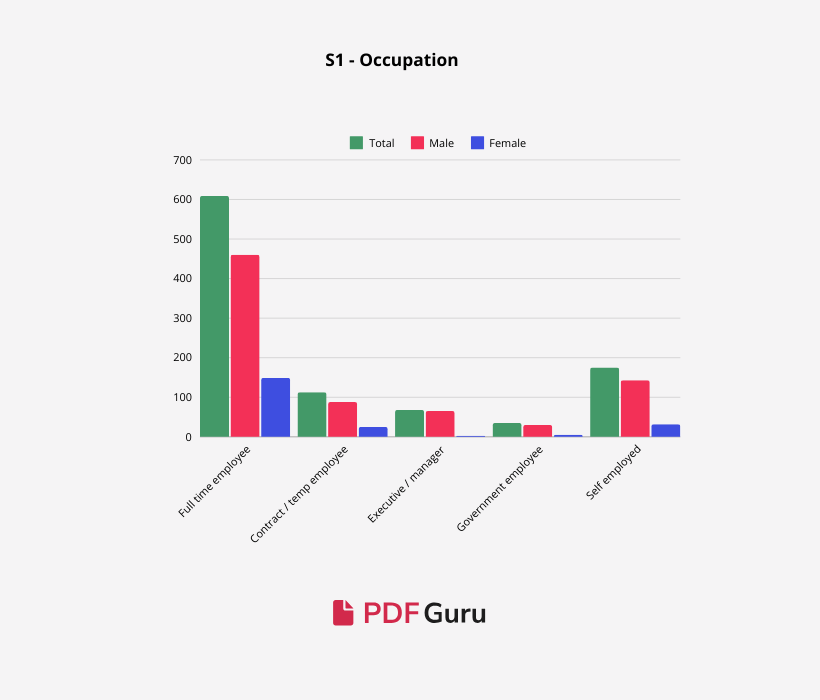
Industry
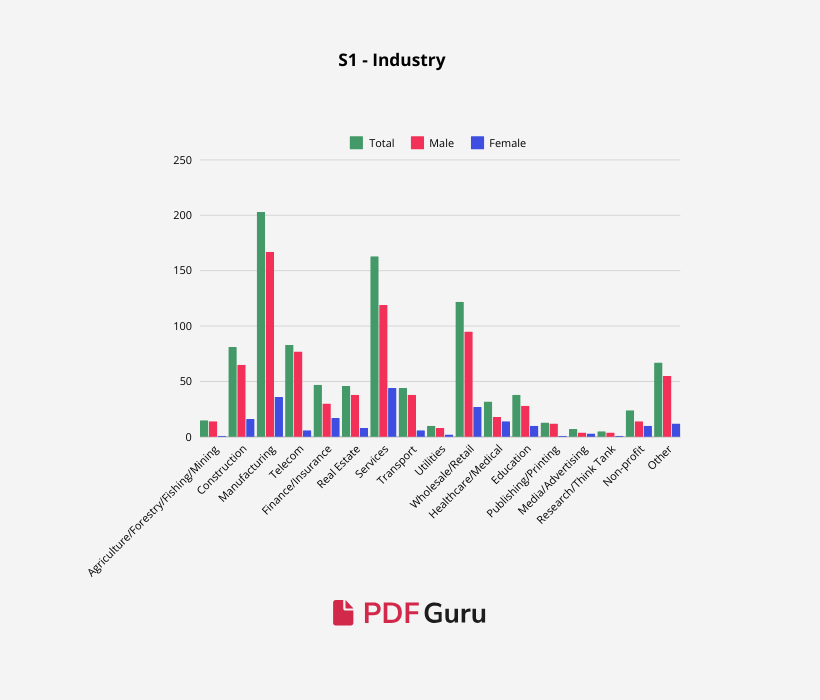
Household Income

Residence Type
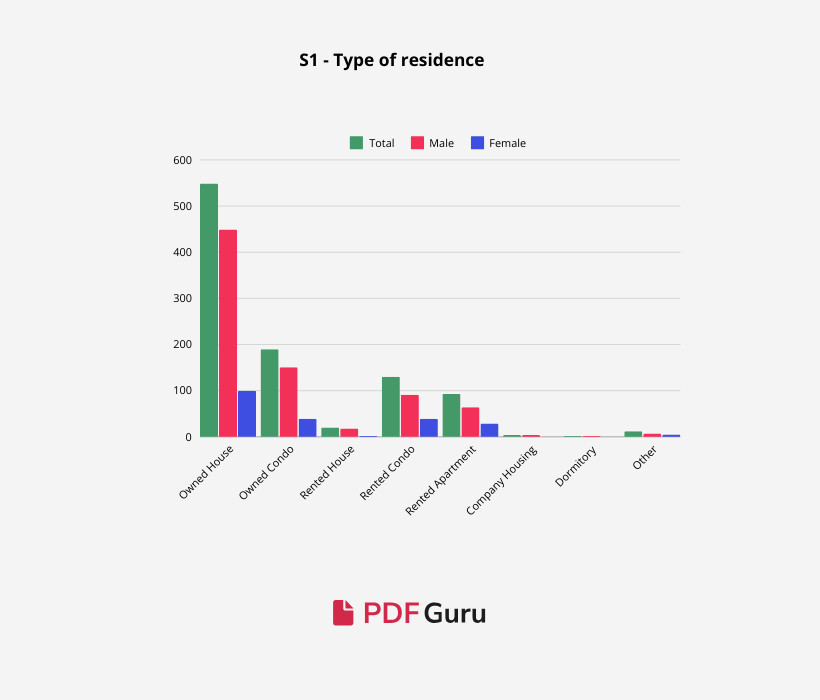
Number of Children

Survey 2: Demographics
Age

Prefecture
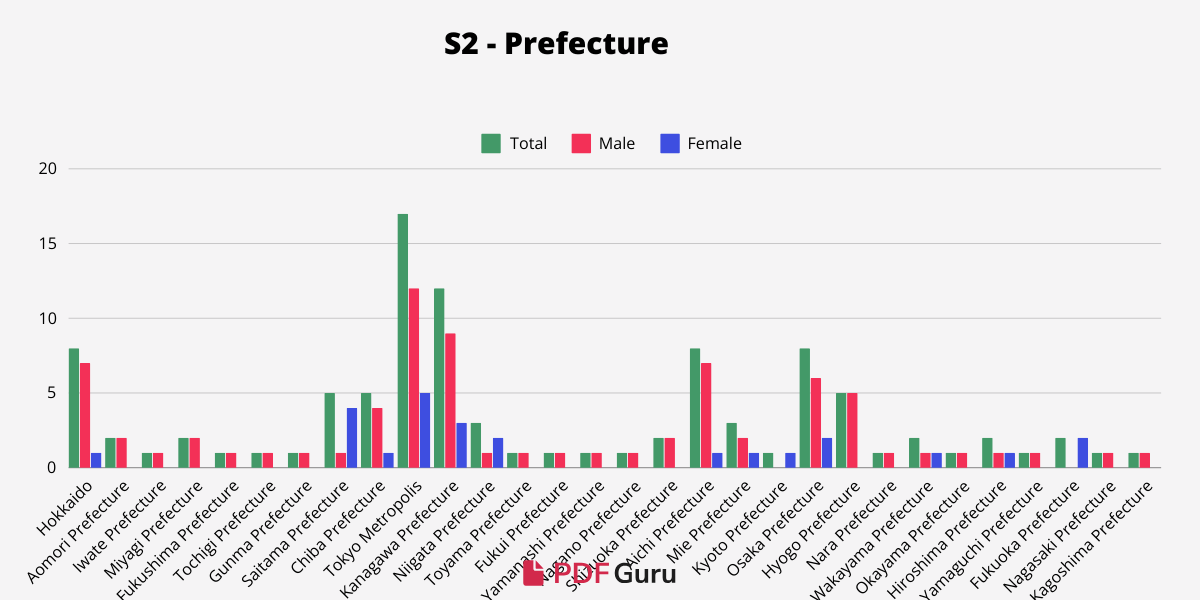
Gender
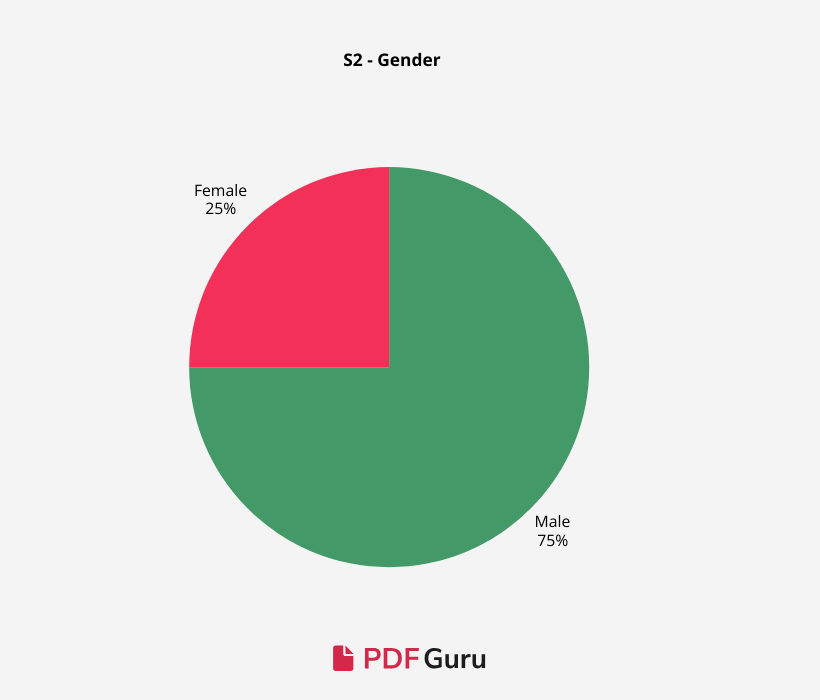
Marital Status
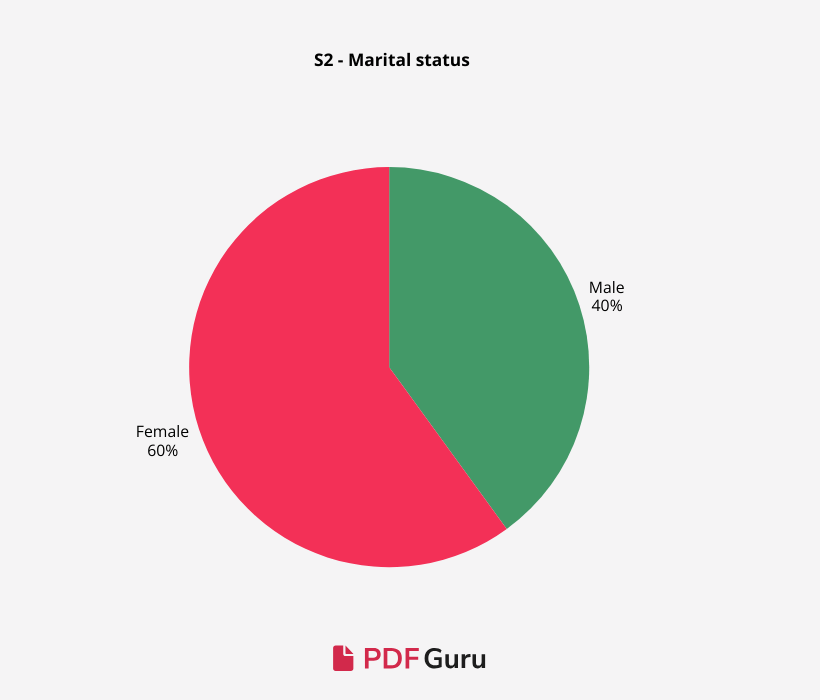
Occupation
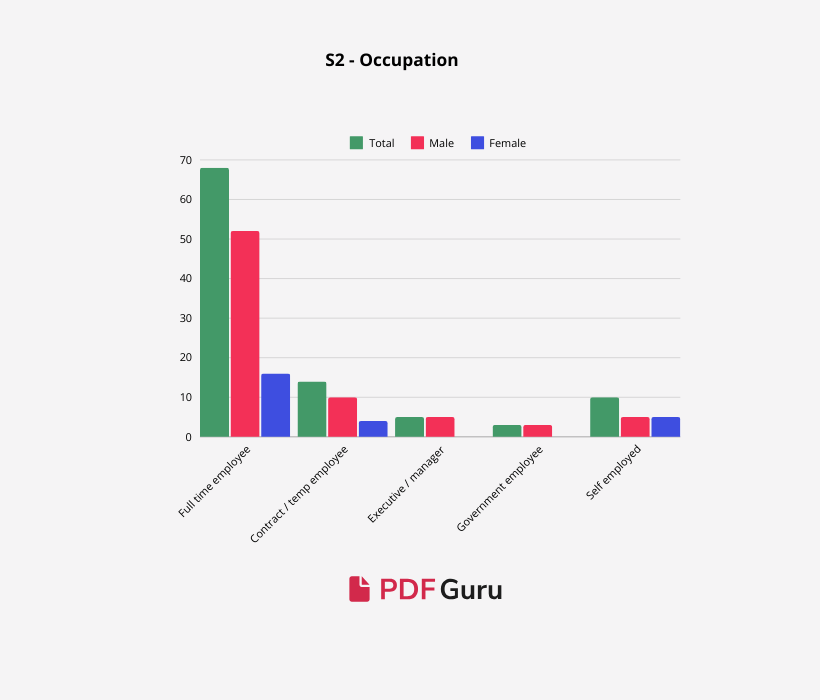
Industry
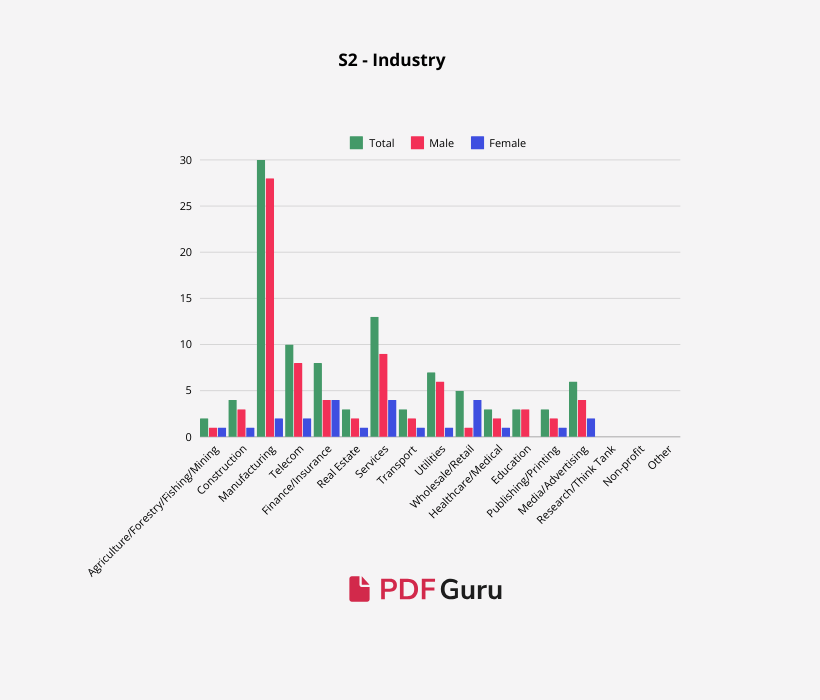
Household Income
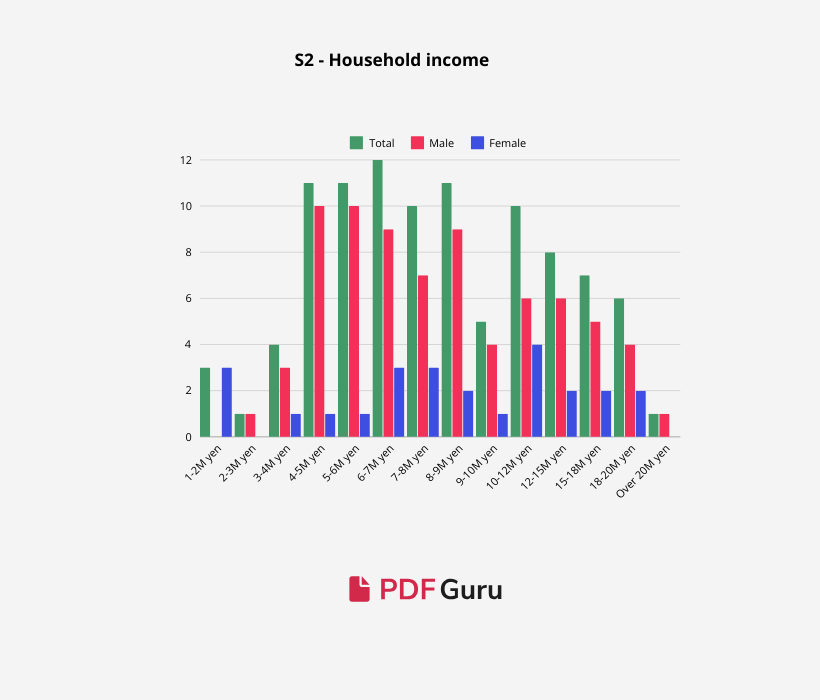
Residence Type

Number of Children

